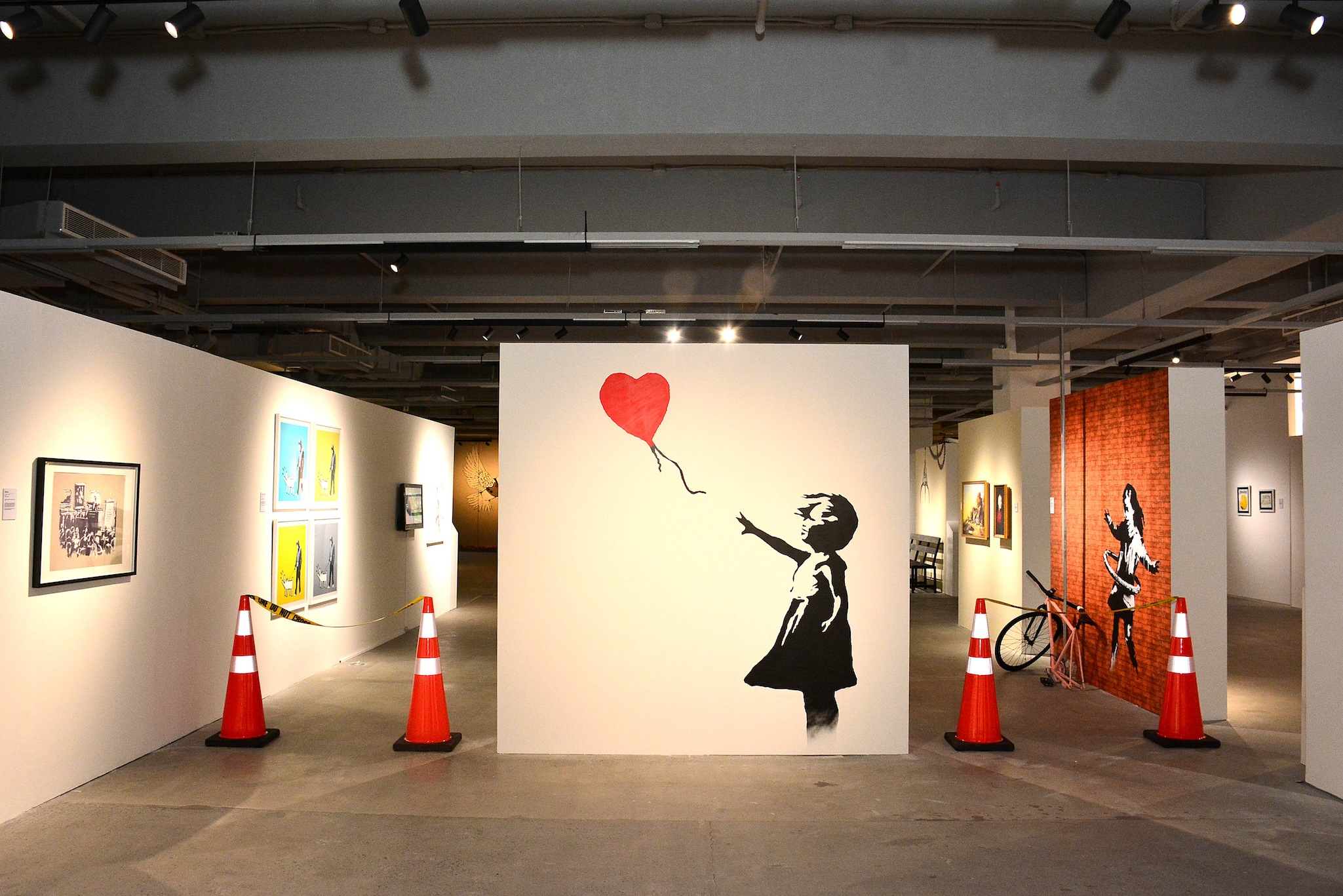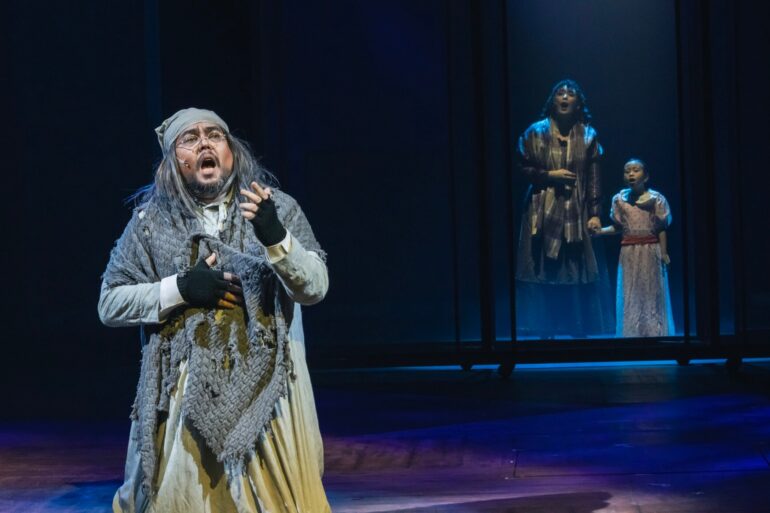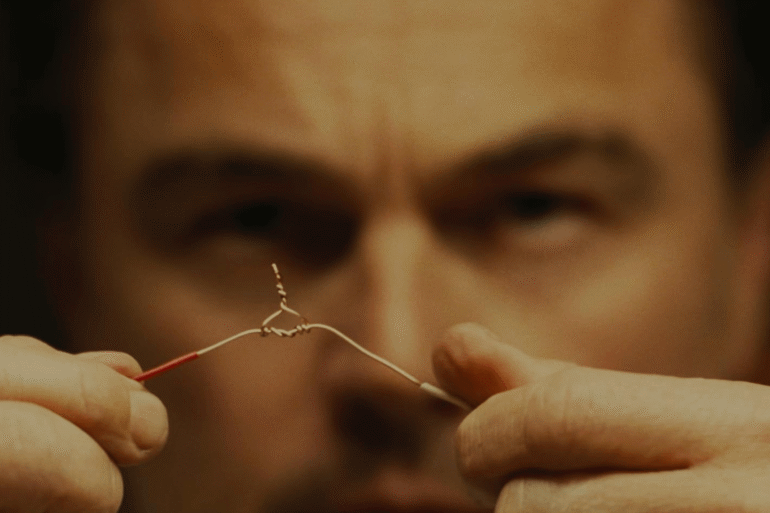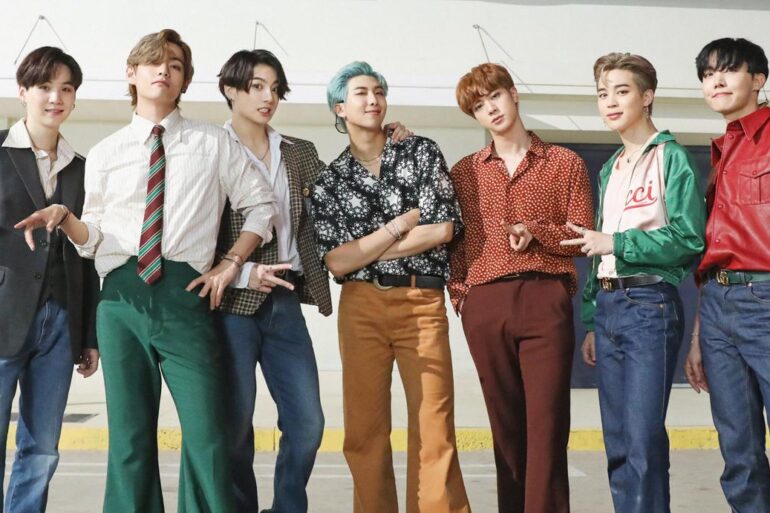Rundown buildings and streets are the usual places where Banksy paints his graffiti. Even unauthorized exhibits of his work try to simulate these in controlled environments. But not Manila.
Banksy Universe in Manila chose to take the artist out of this context and we begin to see why he’s been protesting against such institutions and places for over 30 years .
When the art and production company Banksy Universe first teased the exhibition, it was met with both hostility and resistance for not being endorsed by the “Pest Control Office,” the official body responsible for duly authenticating the works of Banksy, and for running counter to the anti-elite sentiments that eminently bleed through the artworks of the painter.
The ironic disposition that the exhibition takes—where street art amounting to political commentaries are displayed in white-walled, high-brow museums–has incited a discourse that reconciles the preoccupations of the artist with the sociopolitical context of the country.
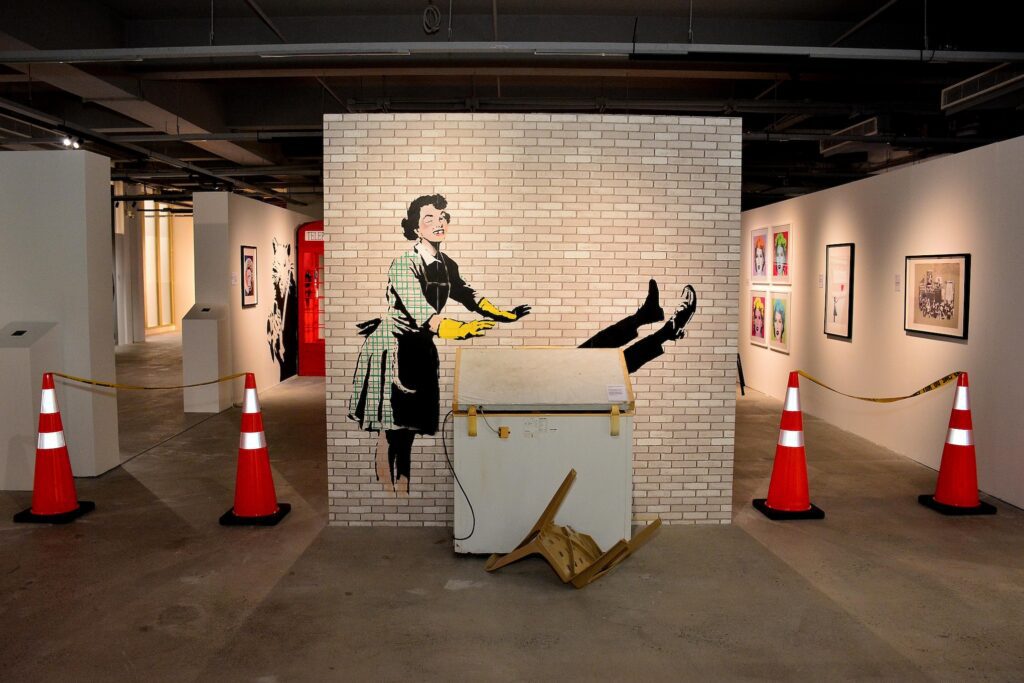


and rats.
But amid the clamor and controversy that surrounded the opening of the Banksy exhibition at the Metropolitan Museum of Manila (The M) in BGC, it remains clear that bringing the global artist’s works across London, Los Angeles, Bethlehem, and the West Bank in one coherent space and in a country where his subversive mechanisms find most relevance was never an easy feat.
Where governments cede parts of the territory, law enforcement propagate macho values that breed gender-based violence, and corporations overburden the working class with anti-poor systems. Banksy’s retrospective all the more finds urgency and importance in making poignant criticisms on the perversion of institutions, the commodification of war, and the commercialization of human life.
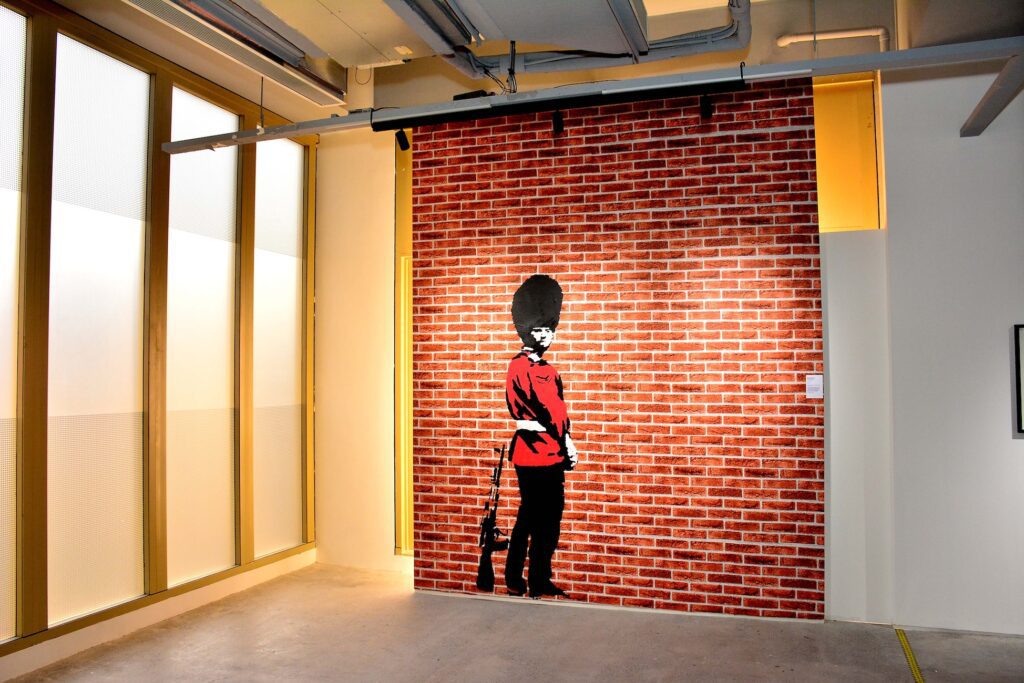


sociopolitical force in art.
Banksy, the anonymous Bristol-based artist, activist, and short film director, is a growing sociopolitical force in art. While popularly known for his ubiquitous depictions of childlike hope, armed conflict, and rats, his shredded 18-million-pound artwork Love is in the Bin (2006), dystopian park rendition Dismaland (2015), and war-enclosed boutique hotel in Bethlehem, Palestine The Walled Off Hotel (2017), which is under the military control of Israel, the multidisciplinary artist nonetheless continues to be a sardonic comedian at heart.
Unlike other artistic protests however, Banksy is unique in that he makes mockery of institutions by reimagining them in unusual, and at times, obnoxious situations, and throwing satirical jabs at the faces of power to tap into a collective subconscious.



Monkey Queen (2004), for instance, depicts a portrait of a monkey with coiffed hair, ostentatious diamonds, and a crown, illustrating how modern society is ruled by primates. Similarly, in Queen Victoria (2003), her majesty is seen atop a woman’s face in a raunchy position known as “queening.”
In the walls of Brighton, the LGBTQ+ capital of the UK, the graffiti artist pictured Kissing Coppers (2004) where two British cops, clad in uniform, are seen kissing as a way to express support towards the community and at the same time denounce police brutality.
In Valentine’s Day Mascara (2023), a housewife with a black eye and missing tooth is seen pushing her husband into an abandoned freezer, destabilizing the trope of the working husband that systemically abuses the stay-at-home wife.



The sarcasm of Banksy is also patently outlined by his use of primitive figures to convey modern issues. Peckham Rock (2005), a lump of concrete carved with a caveman, a bull, and a supermarket trolley, for instance, was surreptitiously installed by the wall art virtuoso in the British Museum as a gag to reinterpret how prehistoric men hunted for food. Similarly, in Trolleys (2006-2007), three cavemen hunters are seen aiming their spears at trolleys to depict our primal dependence on the market.
In the neoliberal age, the stencil artist also makes pervasive references to the hopelessness peddled by capitalism and commercialism. In Barcode (2004), he paints a graphic allegory that contemplates how vitality, as represented by a leopard, is caged in consumerist constraints. Meanwhile, Sale Ends (2006), an ecclesiastical piece where devotees mourn an angry “sale ends today” sign in red, paints the ridiculous worship of materialism.
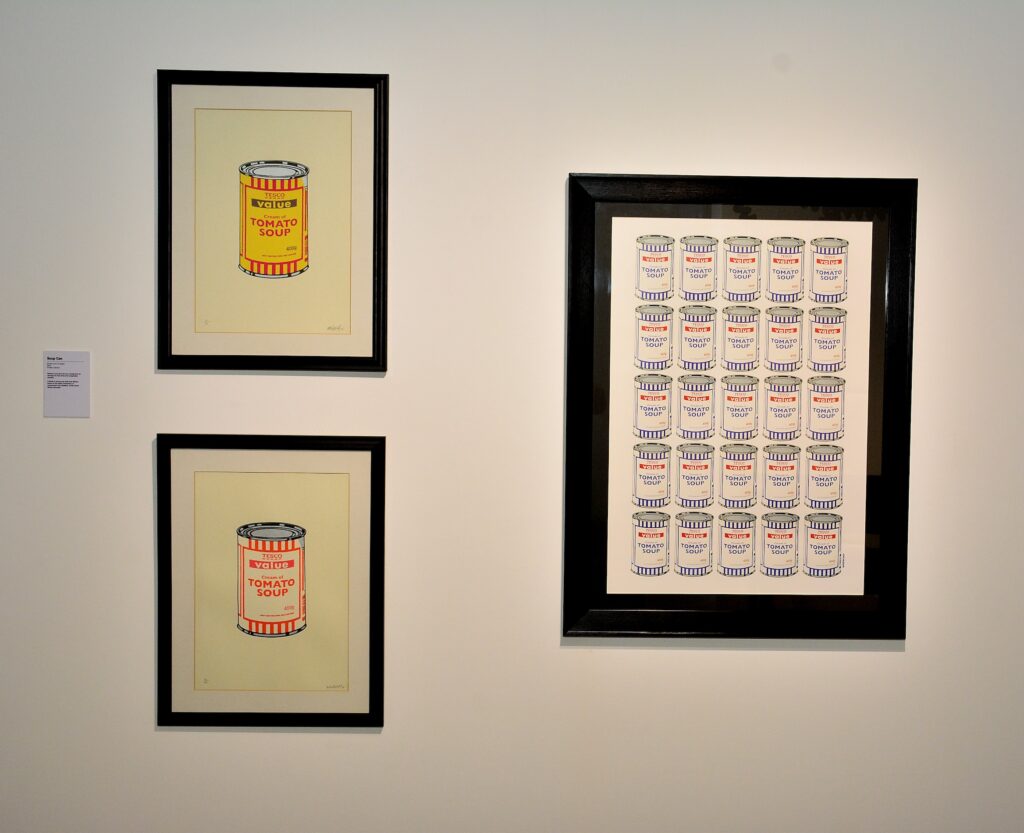


While most of Banksy’s works take an ironic position, not all are characterized by humor. Momentous among them is the replica of The Walled Off Hotel (2017), where the painter-turned-concept-hotel-owner offers an array of bleak concessions, like soaps packaged in matchstick boxes and mugs etched with “the worst view in the world,” alluding to the wall obstructing the hotel view. Walls are decorated with sharp axes, sling shots, and a surplus of surveillance cameras. Souvenirs are comprised of miniature versions of the wall dividing Palestine and marked with hand-painted murals bearing symbols of peace and war.
Finally, the hotel’s centerpiece mixed media work The Walled Off Hotel box set (2017) depicts children swinging happily around a watchtower. At the bottom of the piece, a chunk of the Palestine wall is painted with its flag colors. In its entirety, The Walled Off Hotel, where luxury is placed in the trenches of war, is emblematic of the ignorance and absurdity surrounding the apartheid.






Many walls have stood witness to a multitude of atrocities. They have become perpetrators of divide and symbols of overstepped boundaries. When Banksy chose these walls as his medium, he not only transformed these barriers into bulletins for all to see, but also created a language of emancipation from civil unrest and defiance. From being the “lowest form of art,” the deft hand of the muralist has taken graffiti off the wall.



Banksy Universe, the production company behind the Banksy Universe Manila 2024, has partnered with Childhope Philippines, a non-governmental organization that protects and educates children in street situations. The partnership aims to create opportunities for children to use graffiti and street art as a mode of expression, and all proceeds of the exhibition will go to the organization.
Banksy Universe Manila 2024 runs until November 20. Like many such exhibitions and museums around the world, it is not authorized nor endorsed by the anonymous artist.

